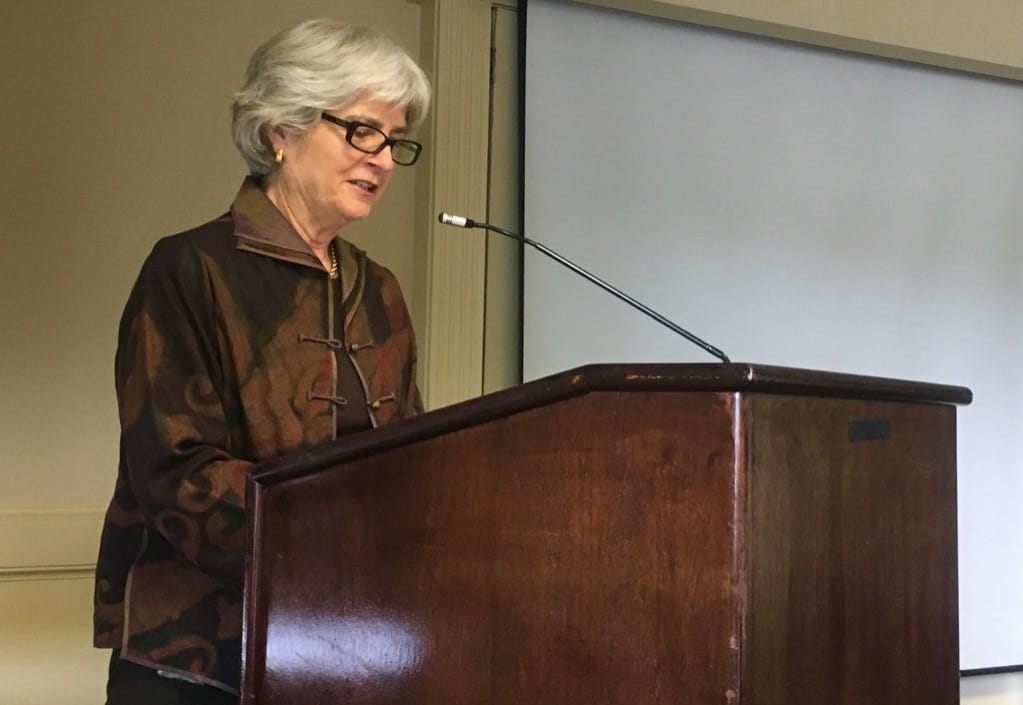FCC Creates Broadband Data Task Force, Public Knowledge Wants E-Rate Expansion, Report on Internet Latency
February 17, 2021 – FCC Acting Chairwoman Jessica Rosenworcel on Wednesday announced the creation of a task force focused on enacting improvements to the agency’s broadband data and mapping tools. In addition to naming senior staff of the new task force, Rosenworcel named Jean Kiddoo as chair of the
Derek Shumway

February 17, 2021 – FCC Acting Chairwoman Jessica Rosenworcel on Wednesday announced the creation of a task force focused on enacting improvements to the agency’s broadband data and mapping tools. In addition to naming senior staff of the new task force, Rosenworcel named Jean Kiddoo as chair of the new broadband data task force.
The task force will lead a cross-agency effort to collect detailed data and develop more precise maps about broadband availability, she said. Rosenworcel thanked Kiddoo and her team for their willingness to take on the serious project.
Kiddoo will still continue serving as chair of the incentive auction force at the agency.
Other leaders of the data task force include Chelsea Fallon as senior implementation officer and C. Sean Spivey as senior counsel. Fallon currently serves as chief of the Data Division in the FCC’s Office of Economics and Analytics and has led the agency’s implementation of the Broadband DATA Act. Mr. Spivey currently serves as an assistant bureau chief in the FCC’s Wireless Telecommunications Bureau.
The purpose of the new task force is to coordinate the agency’s broadband mapping and data collection efforts across the various expert agency teams, including the Office of Economics and Analytics, Wireless Telecommunications Bureau, Wireline Competition Bureau, Consumer and Governmental Affairs Bureau, International Bureau, Office of Engineering and Technology, and Office of the Managing Director.
The task force follows the FCC’s adoption of new data reporting rules last month that determines which companies must report broadband availability and coverage.
It also comes after a Congress pressed the FCC to fix maps built on unreliable carrier data that over-reported the number of rural households that are served with high-speed internet.
Public Knowledge wants expanded E-Rate program
Public Knowledge filed comments this week to the Federal Communications Commission’s public notice urging the regulator to expand the E-Rate internet subsidy to homes.
Public Knowledge filed the submission in partnership with New America’s Open Technology Institute, sayingit “supports ‘off-campus’ use of E-Rate funds to help students studying at home access the broadband they need to stay connected to classes, student services, and their families during the pandemic.” Currently, the E-Rate program legislation only applies to libraries and schools. However, the pandemic has forced kids to learn at home which shows why the legislation should include expanded funding to households, said Larry Irving, CEO of the Irving Information Group, at a web conference this month.
Greg Guice, director of government affairs at Public Knowledge said in a statement:
“As the nation enters its 12th month of the COVID-19 pandemic, most schools remain closed or opened on a limited basis, making distance learning the primary means of educational instruction for many students. The needs of students and teachers to have broadband, therefore, remains as vital today as it did a year ago. This is why we’re asking the FCC to make a common-sense decision to allow the E-Rate program Congress established to ensure schoolchildren and teachers have access to broadband to be used for remote learning.”
Guice said the statute creating the E-Rate program authorizes Congress to give schools and libraries flexibility in directing funding that would enable remote learning. This includes services and equipment needed for students and the public.
The goal, he said, is to reach students wherever they are. Consistent with past Commission decisions, the Commission should immediately remove funding barriers to remote learning, he added.
Latency more crucial for videoconferencing than bandwidth
Forecast market research group on Monday said low latency is more critical than bandwidth when it comes to using video conferencing services.
Latency is the measure of how quickly a computer sends and receives information. The study aimed to find the minimum requirements needed to enjoy jitterless video calls
The study, which was based on video conferencing data collected over more than 152 hours by a range of users from various locations, was led by Alan Jones, Peter Sevcik, and Rebecca Wetzel. It found internet connectivity and performance requirements are in more demand from the most popular video conference applications. The researchers studied and compared Zoom, Slack, Google Meet, Cisco’s WebEx, and Microsoft’s Teams.
“Bandwidth is not the only factor contributing to a satisfactory video conferencing experience. Increased latency and/or loss also influence the experience of a video conferencing participant,” the researchers said.
“Long distances—such as a video conference call involving participants on both U.S. coasts—increase the risk of poor audio quality. If multiple participants are spread over long distances, a call can easily degrade into meaningless noise when multiple speakers try to speak simultaneously.”
In other words, the greater the distance between machines communicating with each other the worse the lag impact. This is why streaming services like Netflix make copies of their content on content delivery networks that are located closer to subscribers.










Member discussion